New ???? Batteries OPT8073-167 D51R YellowTop Dual Purpose Battery ????
$279.99 Original price was: $279.99.$85.00Current price is: $85.00.
- Have the best deals
- Experience Quality, Shop with Us
- Shop with confidence, we guarantee quality.
- Experience the difference quality makes.

- Brand: Optima
- Vehicle Service Type: Passenger Car
- Size: 9-5/16 x 5-1/16 x 8-15/16 inch
- Voltage: 12 Volts
- Battery Cell Composition: Lead-Acid, AGM
- Item Weight: 26 Pounds
- Item Dimensions LxWxH: 9.21 x 4.98 x 8.94 inches
- Number Of Cells: 6
- Terminal: SAE Terminal
- 12-Volt, 450 Cold Cranking Amps, Size: 9 5/16″ x 5 1/16″ x 8 15/16″ tall, Weight: 26 pounds, SAE Post
- Reserve capacity of 66 minutes for constant performance
- Optimal starting power even in bad weather
- Fifteen times more resistant to vibration for durability
- This item is not for sale in Catalina Island
5 reviews for New ???? Batteries OPT8073-167 D51R YellowTop Dual Purpose Battery ????
Add a review Cancel reply
Related products
Sale!
Batteries & Accessories
Rated 4.43 out of 5
Sale!
Batteries & Accessories
Buy ✔️ XS Power 551 I-BAR Side And Top Terminal Adaptor ????
Rated 4.29 out of 5
Sale!
Batteries & Accessories
Rated 4.50 out of 5
Sale!
Rated 4.71 out of 5
Sale!
Batteries & Accessories
Best reviews of ???? OPT8016-103 Batteries D34M BlueTop Starting And Deep Cycle Marine Battery ????
Rated 4.43 out of 5
Sale!
Batteries & Accessories
Rated 4.20 out of 5
Sale!
Batteries & Accessories
Rated 4.00 out of 5
Sale!
Batteries & Accessories
Rated 4.50 out of 5

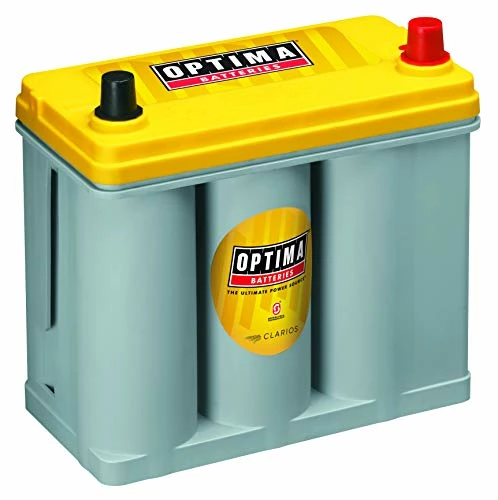
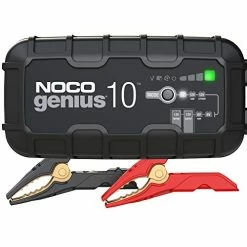
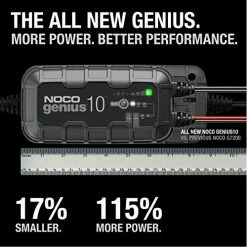

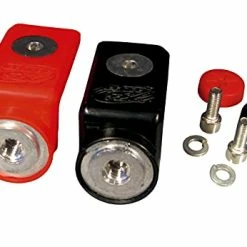
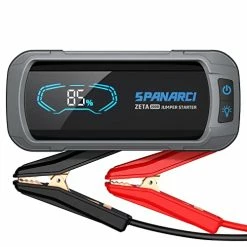

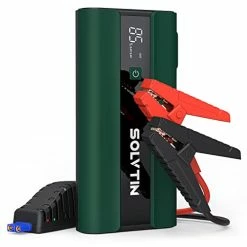
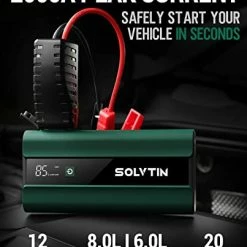
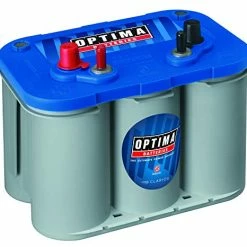
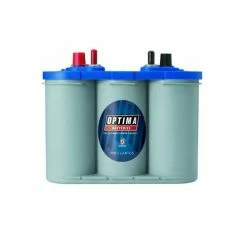
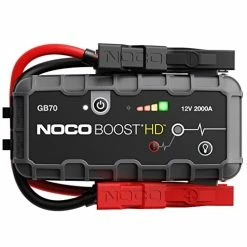
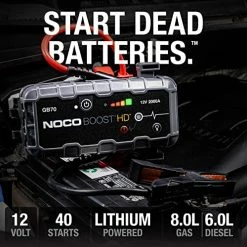
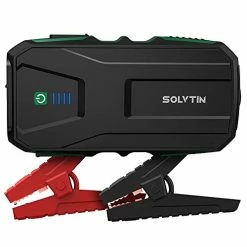



Greg –
Just thought I’d add a review since I’ve noticed that many websites having incorrect recommendations about which batteries will fit in the Highlander since they do not differentiate between the hybrid and non-hybrid versions. (Hybrid = Size Group 51R)So, the 5 star rating is purely for the fit—I will update this review if the battery does not perform comparably or better than the battery it’s replacing— it’s an exact fit for the battery indentation at its base (where battery temp gage can monitor it accurately + keep it from sliding) as well as for the battery cover to slide down over top of it in a 2006 Toyota Highlander Hybrid.And for anyone else purchasing for this vehicle, here was my reasoning for choosing this particular battery:So, I was initially hesitant to buy this battery since it had a lower CCA (450) / CA (575) / RC (66) than its previous battery, which was an Autocraft Gold 51R-2 (standard lead-acid flood) battery with CCA 500, CA 625, RC 85 min. However, since the Highlander hybrid’s engine is started by the traction battery and not the 12V battery (and therefore not utilizing peak CA draw), it’s my presumption that having a deep cycle battery will hold up better in the long run since the ’06 HH has a tendency to suck batteries dry in relatively short periods of time (which generates hybrid system fault codes if the 12V runs too low to run the controllers)—and since AGM batteries can accept a charge faster than a standard battery and have a slower self-discharge rate, it might tolerate the constant charging/discharging better over time.(Side note: the Autocraft battery was already above OEM requirements, so dropping to a lower CA battery should not be a problem in this instance.)In short: despite a lower peak & average cranking amps, I’m thinking that the YellowTop’s more favorable charge/discharge properties (and longer lifespan) may make this a better choice for my vehicle.***UPDATE, 3 YRS OUT***Lasted almost exactly 3 years; not holding a charge like it should now, but still useable until the replacement arrives with an occasional booster charge. I think what finally did it in was when the battery had a total discharge when I was gone for around 3.5 months in the winter – didn’t seem to hold a charge properly afterward (using an AGM smart charger), though it worked for several weeks. I think the lifespan was acceptable given that it was always outside in the Sacramento-heat / triple-digit summers. I plan to purchase this again.
Jennifer (Integress) –
Topline summary: I’m on my second Optima Yellowtop battery; the first battery arrived dead, and the replacement battery has died at just under 2 and a half years old even though I keep it connected to a battery tender whenever the vehicle is parked. Since my battery is 2 years and 4 months old, Amazon cannot assist with replacement and Optima is going to make me jump through hoops to submit a warranty claim (warranty for this battery is 36 months). Don’t pay premium for this battery. Maybe it was good back in the day, but I can say from experience with two of these batteries purchased in 2016 that they are rubbish now.If you like reading, here’s the detailed version of my experience.I purchased the Optima D51R Yellowtop battery for my 1994 Acura Integra on November 25, 2016, however once installed, my vehicle still did not start. I thought there was no way a brand new battery would be dead, but figured I better check so I took that battery to a local Pep Boys to have the charge on the battery checked and the reading came back that this battery was dead/discharged. (See photo).I contacted Amazon customer service and the person who assisted me was super helpful and sent me a replacement battery immediately at no cost to me. I didn’t even have to send back the dead battery (amazing) and a new battery went shipped to me a day after I contacted customer service (super impressive).I received the replacement battery on December 28, 2016 and promptly installed it. This battery worked, andas an extra precaution I have had the battery connected to a battery tender to maintain the charge when thevehicle is not driven. This has worked out well, up until last Friday, May 10, 2019. After driving the vehicle to work and making a stop on the way home, I had trouble starting the vehicle in the parking lot (it barely started on the third try). Once home, I connected the battery to the battery tender, but was unable to charge; per the battery tender, if thevoltage is below 3 volts, it will not be able to charge the battery. I have no idea how the battery became discharged in a matter of hours, as I always have this connected to a battery tender at home and the battery tender indicated that this battery was at full charge when I disconnected it that morning. So how did it go from fully charged to deeply discharged less than 12 hours later?Optima’s warranty on this battery is 36 months, which would end in November or December of this year, depending on which battery the warranty starts from. Either way, it should still be under the warranty time frame.Unfortunately, since this replacement battery is 2 years and 4 months old, Amazon cannot assist the way they did when my original battery arrived discharged. I have to work with Optima to submit a warranty claim and this isn’t exactly easy since this is an online purchase. I contacted Optima and their response to me was that they occasionally hear from customers who have trouble recharging their batteries once they have been deep discharged (occasionally eh?) followed by a lengthy set of instructions to resuscitate the battery. The gist of it is to trick my battery charger in to thinking the battery has a higher voltage than it does so that the charger will charge it. To do this, they suggest charging the discharged battery in parallel with another fully charged 12V battery and monitoring the batteries frequently during charging (who doesn’t love babysitting a charging battery in their garage on a lovely humid Texas afternoon) because while it is ok for the discharged battery to get slightly warm during the charging process, it is super not ok if it gets hot to the touch because that means there is a short and the process should be terminated. This doesn’t sound dangerous at all. Once the Optima is above 10.5V, it is ok to disconnect the additional battery and continue charging the Optima until it is fully charged. This isn’t guaranteed to work, by the way.In the event this does not work, they have asked me to provide a copy of test results after fully charging the battery (12.65V minimum) from a local retailer and then they can escalate it to Amazon Automotive Assist.Look. Listen. While I do love the convenience of purchasing items online – seriously, it is amazing to have a battery shipped directly to your house so you can install it in your own garage at a time that is convenient to you instead of jump starting the car and getting it to Sears and then waiting for them to test the battery and then install a new one upon learning that the battery is in fact dead. You remember Sears right? I will say though, at least those Die Hard batteries they sold lasted 5 years. This Optima battery is supposed to be premium and I couldn’t even get 2 and a half years out of it. I digress; I love the convenience of purchasing the battery online but in the event you run into a warranty issue, trying to get that addressed is more trouble than its worth.I’m not going to bother trying to submit a warranty claim for this Optima battery, because 1. I don’t have the time or energy to jump through the hoops they want and 2. Do I really want to replace my replacement battery with another Optima that will probably die in 2 years? No. No i do not. I’m going to use my AAA membership instead, which is just as convenient, if not more so! They will come to your house and install a new battery for you!
Ron –
I bought this battery as my OEM lasted 3 years and because of all the new electronics in cars today decided we need a bit more umf! SO I did my research for Honda 2017 EX-L and this optima battery is what was recommended. It lasted exactly 26 months. Now, to the important parts: The manufacturer lists a 3 year replacement warranty BUT only if bought at a brick and mortar store and you have to return the battery to THAT store (no other) along with the proof of purchase (sales receipt). Any thing bought online is not honored, however, Amazon does for a nominal fee ($30+) offer a 3 & 4 year warranty. They also provide some sort of warranty up to 2 years but I was unable to see what that was as I had passed that date by 2 months. So my take away from this learning experience is to buy vehicle batteries locally and that the fancy extra powered battery isn’t really all that it is cracked up to be. ALWAYS carry jumper cables! Nuff said!
EL TORO –
Works very well. No problem so far.
Bill –
An unusual shape for a car battery, but it was the only one on Amazon to fit my 17 tear old vehicle. I’ve had it about a month now, and it gets the job done. I still think it was rather expensive, but I was in need of a battery that could be delivered. (My old battery wouldn’t take a charge!)